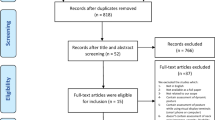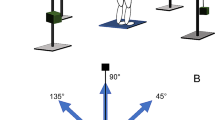Abstract
Upper trunk bending movements were accompanied by opposite movements of the lower body segments. These axial kinematic synergies maintained equilibrium during the movement performance by stabilizing the center of gravity (CG), which shifted on average across all the subjects by 1±4 cm in the anteroposterior direction and thus always remained within the support area. The aim of the present investigation was to provide an insight into the central control responsible for the performance of these synergies. The kinematic analysis was performed by the method of principal components (PC) analysis applied to the covariation between ankle, knee and hip joint angles and compared with CG shifts during upper trunk bending. Subjects were asked to perform backward or forward upper trunk bending in response to a tone. They were instructed to move as fast as possible or slowly (2 s), with high or low movement amplitudes. PC analysis showed a strong correlation between hip, knee and ankle joint changes. The first principal component (PC1) representing a multijoint movement with fixed ratios between joint angular changes, accounted, on average, for 99.7%±0.2% of the total angular variance in the forward trunk movements and for 98.4%±1.4% in the backward movements. The instructed voluntary regulation of the amplitude and velocity of the movement was achieved by adapting the bell-shaped profile of the velocity time course without changes in interjoint angular relations. Fixed ratios between changes in joint angles, represented by PC1, ensured localization of the CG within the support area during trunk bending. The ratios given by PC1 showed highly significant dependence on subjects, suggesting the adaptability of the central control to each subject’s biomechanical peculiarities. Subject’s intertrial variability of PC1 ratios was small, suggesting a stereotyped automatic interjoint coordination. When changing velocity and amplitude of the movement, the ratios remained the same in about half the subjects while in others slight variations were observed. A weak second principal component (PC2) was shown only for fast movements. In forward movements PC2 reflected the early knee flexion that seems related to the disturbances caused by the passive interaction between body segments, rather than to the effect of a central command. In fast backward movements, PC2 reflected the delay in hip extension relative to the movement onset in the ankle and knee that mirrors intersubject differences in the initiation process of the axial synergy. The results suggest that PC1 reflects the centrally controlled multijoint movement, defining the time course and amplitude of the movement and fixing the ratios between changes in joint angles. They support the hypothesis that the axial kinematic synergies result from a central automatic control that stabilizes the CG shift in the anteroposterior direction while performing the upper trunk bending.
Similar content being viewed by others
Author information
Authors and Affiliations
Additional information
Received: 8 August 1996 / Accepted: 7 July 1997
Rights and permissions
About this article
Cite this article
Alexandrov, A., Frolov, A. & Massion, J. Axial synergies during human upper trunk bending. Exp Brain Res 118, 210–220 (1998). https://doi.org/10.1007/s002210050274
Issue Date:
DOI: https://doi.org/10.1007/s002210050274




